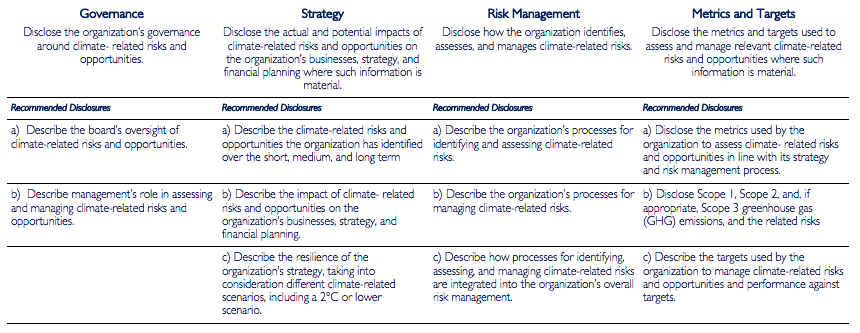Module 2: Transition Risks
Transition risks and disclosure
In the Mark Carney video, he discusses the role of corporate disclosure of climate-related risks. Full disclosure of risks ensures that investors have adequate information about a company’s exposure to climate related risks (both physical and transition risks). With adequate information, investors can build a full understanding of risk into their valuation of a company’s shares.
Climate-related financial disclosures enable financial markets to calibrate to an acceptable level of risk, reducing the risk of financial instability that might otherwise arise from large-scale losses and write-downs of assets related to climate change. They might also enable more economically efficient allocation of financial capital.
When Mark Carney was the Chairman of the Financial Stability Board of the Bank for International Settlements, he commissioned a report on climate-related financial disclosures. The Task Force on Climate-related Financial Disclosure. The Task Force provided recommendations on disclosures in the areas of governance, strategy and risk management, as well as metrics to assess risks and opportunities and targets used to manage risks and report on performance.
Below is a summary of the Task Force’s recommendations.


